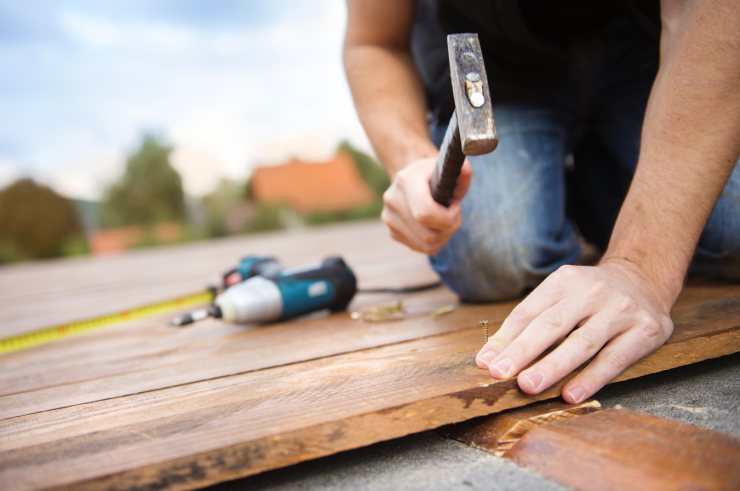House Remodeling Contractor: Bring Your Vision to Life
House remodeling contractors specialize in executing homeowner visions through professional design services, quality construction, and project management that delivers results...

Whether you’re hosting backyard barbecues or enjoying your morning coffee in peace, your wood deck adds major value to your outdoor space. But exposure to sun, rain, and snow means your deck needs regular care to stay safe and look its best. In this updated guide, we’ll walk you through what it takes to keep your wood deck beautiful and structurally sound all year round.
Decks deal with a lot, especially in changing climates. Stay ahead of the most common threats:
• Water: Moisture leads to expansion, contraction, rot, and cracked boards. Sweep your deck regularly and clear puddles after storms.
• Sun: UV rays can bleach and weaken your wood. Protect the surface with stain or a UV-resistant sealant.
• Insects: Keep plants trimmed back, remove standing water, and use bug lights. A sealed deck helps repel pests.
Set aside time once a year—ideally in late spring or early summer—for a thorough inspection. Move furniture aside and sweep off leaves and debris before getting started.
🔍 Inspection Checklist
• Ledger board & flashing: Check where your deck connects to your home. Look for signs of rust, loose flashing, or water damage.
• Joists, beams, and posts: Look for rot and rusted hardware.
• Deck surface: Watch for cracks, soft spots, or popping nails.
• Railings & stairs: Shake railings to check stability. Use a flathead screwdriver to test for rot—if it sinks in more than ¼ inch, you’ve got a problem.
🛠️ Tools Needed: Flashlight, flathead screwdriver
💰 Cost: Free
Got one or two bad boards? You can replace them without tearing up the whole deck.
Steps:
1. Cut out the damaged board.
2. Remove nails or screws.
3. Add support cleats under the cutout area.
4. Lay flashing over exposed joists.
5. Install the replacement board.
🛠️ Tools Needed: Circular saw, drill, pry bar, safety gear
💰 Cost Estimate: $25 per board + tool rental (~$150 total if you need tools)
📅 Best Time: Late spring or early summer
Hot and cold weather makes fasteners pop up, which can be a tripping hazard.
Quick Fixes:
• Temporary: Hammer the nail back in (not ideal long-term).
• Better: Remove and replace with a deck screw next to the old hole.
🛠️ Tools Needed: Hammer, nails, deck screws
💰 Cost: $9–$11
📅 Best Time: Spring or summer
Start the season off right by power washing your deck to get rid of dirt, mildew, and buildup.
• Use a low-pressure setting: 500–600 PSI for softwoods
• Test first: Try an out-of-sight area like a stair tread
Deck Sealer vs. Stain
• Sealer: Transparent, protects against moisture—not UV rays. Needs yearly reapplication.
• Stain: Offers both water and UV protection. Longer lasting and gives your deck color.
🛠️ Tools Needed: Pressure washer, paint roller, brush, gloves
💰 Cost: ~$45/gallon for stain, ~$35/gallon for sealer, ~$26 for washer rental
📅 Best Time: Spring
• Clean and fully dry the deck first.
• Apply stain in dry weather (temps between 50–90°F).
• Use painter’s tape to protect siding or nearby surfaces.
• Use a natural-bristle brush for best penetration.
Before snow and ice hit, prep your deck to avoid damage:
• Tarp it: Lay down a heavy-duty tarp before the first snow.
• Shovel carefully: Use a plastic shovel or broom to clear snow parallel to the boards.
• Avoid salt: It can damage your finish. Use pet- and wood-safe ice melt (calcium chloride-based).
🛠️ Tools Needed: Tarp, plastic shovel, broom, ice melt
💰 Cost: $50 (tarp), $87 (ice melt)
📅 Best Time: Winter
• Budget-friendly but high maintenance.
• Annual staining and sealing needed.
• Boards shrink over time, causing splinters—may not be best for homes with kids or pets.
• Naturally rot-resistant.
• Clean and seal annually to maintain appearance.
• Durable and weather-resistant.
• Can be left to weather naturally or stained once a year for color retention.
• More expensive but lower maintenance in the long run.
If your deck is showing serious signs of wear or structural damage, it may be time to rebuild. Don’t take chances—use our [Deck Removal Guide] to safely start over with a fresh structure.
Whether you’re hosting backyard barbecues or enjoying your morning coffee in peace, your wood deck adds major value to your outdoor space. But exposure to sun, rain, and snow means your deck needs regular care to stay safe and look its best. In this updated guide, we’ll walk you through what it takes to keep your wood deck beautiful and structurally sound all year round.